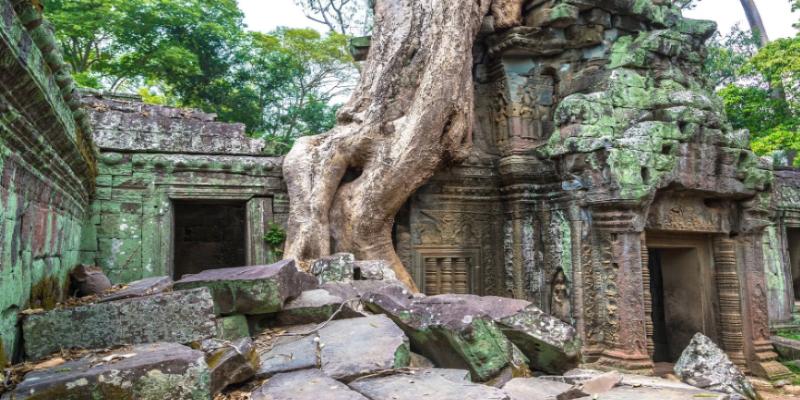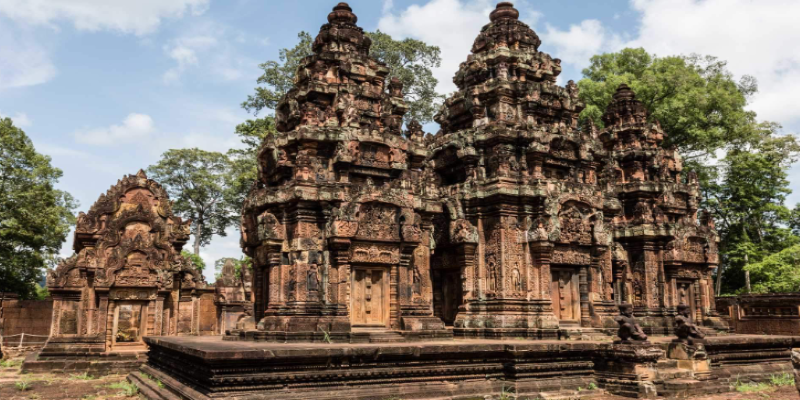Walking Through Centuries: Temple Hopping in Siem Reap, Cambodia
Advertisement
Siem Reap isn’t just a city—it’s a gateway to a lost world where stone temples whisper ancient stories. The air hums with the echoes of a civilization that built monuments so grand they still defy time. Temple hopping here isn’t just about ticking off famous sites; it’s about wandering through history, feeling the weight of centuries in moss-covered ruins, and standing in awe beneath towering spires that once touched the sky in devotion.
From the splendor of Angkor Wat to the tree-hugging mystery of Ta Prohm, each tells a different story. Some stand majestically tall, eerily silent as if in hiding, but demand to be felt and touched by sight. More than a trip, it's an invitation to step into the soul of Cambodia.
The Majesty of Angkor Wat
Angkor Wat is Cambodia's grandest temple, and it attracts anyone interested in the country's history of architecture and spirituality. It was built in the early 12th century by King Suryavarman II. It was primarily a Hindu temple dedicated to Vishnu. After the religious conversions in Cambodia over time, this temple eventually transformed into a temple for Buddhism. Today, Angkor Wat is a symbol of Cambodia, featured prominently on its national flag, and it remains the largest religious monument in the world.
Walking through the temple, you will note it is covered with very beautiful bas-relief carvings and delicate etchings showing scenes from Hindu mythology, with the famous Churning of the Ocean of Milk. The towers of the central temple rise high, filling the atmosphere with a feel of grandeur that cannot be avoided. Many commented on the symmetry of the plan so that everything was perfectly in line, reflecting respect for harmony and order among the ancient Khmer people.
A sunrise visit to the Angkor Wat complex is particularly breathtaking. When the first rays of daylight hit the temple's spires, the whole structure seems to come alive with a soft, golden glow. The iconic view during sunrise from the reflection pool in front of the temple is dramatic. It gives an opportunity for reflection before heading out on your day of temple-hopping.
Exploring Ta Prohm: The Temple Embraced by Nature
Ta Prohm is one of the most unique temples in Siem Reap, where history and nature intertwine in an almost mystical way. Unlike many of the other temples that have undergone restoration, Ta Prohm has been left in its partially overgrown state, with massive tree roots and vines creeping over the stone structures. The most famous trees at Ta Prohm are the spindly, ancient-looking silk-cotton trees, whose roots twist and turn around the temple, giving it an otherworldly feel.

Built in the late 12th century by King Jayavarman VII, Ta Prohm was a Buddhist monastery and university. Over time, nature reclaimed it, intertwining massive tree roots with ancient stone. Walking its shadowy corridors, visitors witness history merging with the wild, where twisted roots embrace crumbling carvings, creating an eerie yet mesmerizing glimpse into Cambodia’s past.
For many, Ta Prohm is most memorable because of its appearance in the famous film Tomb Raider with Angelina Jolie, which introduced the temple to a global audience. However, even without Hollywood glamour, the temple is a must-see, offering a moment to appreciate the delicate balance between human creation and nature's unstoppable force.
Bayon Temple: A Towering Symbol of the Khmer Empire
Bayon Temple, located at the heart of Angkor Thom, is another stunning gem of Siem Reap. Unlike the more linear designs of temples like Angkor Wat, Bayon stands out with its many towers adorned with large, serene faces. Built-in the late 12th century during the reign of King Jayavarman VII, Bayon was dedicated to the Mahayana Buddhist ideals, reflecting the king's shift toward Buddhist teachings.
The most distinctive feature of Bayon is its 200-plus stone faces, which are believed to represent Avalokiteshvara, the Bodhisattva of Compassion, though some scholars argue they may depict King Jayavarman himself. The faces are enigmatic, with slightly smiling expressions, making them a captivating subject for visitors. As you wander through the temple, the towers seem to loom over you, creating a sense of awe that is difficult to capture in words.
The temple’s design is intentionally labyrinthine, encouraging visitors to lose themselves within its complex corridors. This disorienting layout, combined with the temple’s many faces and intricate carvings, makes Bayon a mesmerizing place to explore.
Banteay Srei: The Jewel of Khmer Artistry
Although Banteay Srei is smaller than the grand temples like Angkor Wat or Bayon, it is widely regarded as one of the finest examples of Khmer art. Located about 25 kilometers from the main Angkor Archaeological Park, Banteay Srei is often referred to as the “Citadel of Women” due to the delicate nature of its carvings. Built in the 10th century, the temple is dedicated to the Hindu god Shiva and is famous for its pink sandstone construction, which gives it a distinct appearance.

The carvings at Banteay Srei are incredibly intricate and well-preserved. They depict scenes from Hindu mythology, daily life, and religious symbols. The temple's architecture is characterized by its small scale but astonishing detail, showcasing the high level of craftsmanship of the Khmer builders. As you explore the temple, you'll see delicate floral patterns, depictions of gods, and intricate carvings that reflect the spiritual beliefs of the time.
Banteay Srei is often less crowded than other temples, allowing visitors to enjoy a more tranquil and intimate experience. The temple’s smaller size also makes it easier to explore at a leisurely pace, appreciating the stunning artistry that is evident in every corner.
Conclusion
Temple hopping in Siem Reap is an unforgettable journey through history, spirituality, and breathtaking architecture. Each temple, from the grandeur of Angkor Wat to the mysterious ruins of Ta Prohm, tells a story of devotion and time’s passage. Walking through these ancient wonders, you feel the echoes of a lost civilization, still alive in stone and silence. Siem Reap isn’t just a place to visit—it’s an experience that lingers, leaving you with a deep connection to Cambodia’s rich past.
Advertisement












